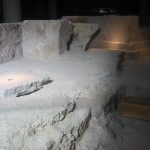The involvement and activity of musicians of Llíria within the UNESCO Creative Cities Network is growing stronger. Coinciding with the first anniversary of the joining of Llíria, two closely linked musicians have raised the flag of Edetanian music outside our territory.
Last November 5, the chief conductor of the Orquesta Sinfónica of the Unió Musical de Llíria, Pascual Cabanes, conducted the Banda Sinfónica Municipal de Sevilla as a guest. The concert was organised by the City Council of this municipality, which, like Llíria, is also a Creative City of Music. The event is the first step towards an Edetanian-Sevillian link that will grow in the coming months.
Two days later it was the turn of Rafael Serrallet, guitar teacher at the Conservatorio de Música de Llíria, who gave a magnificent recital in a Serbian city, which, like Llíria, entered the list of UNESCO Creative Cities of Music in 2019. There, he gave a master class on the occasion of his visit.
In recent months, Edetanian musicians and artists have also cooperated with cities such as Bogotá, Terrassa, Granada, Kansas City, Brno, Idanha-a-Nova or Leiria. As soon as the health situation makes it advisable, the Network will support more ambitious projects so that the musical groups of Llíria can also increase their presence abroad. There is already a solid relationship of cooperation with entities such as the Orquesta de la Universidad Internacional Menéndez Pelayo.
Llíria and its musicians are thus promoting the objectives of the Network, consolidating cooperation between cities and stimulating creativity as a driving force for urban development. New windows and opportunities for development for young people and more enterprising culture professionals are opened. The challenge is for music to play a leading role in the active in the local economy and is also part of the city’s tourism mechanism.














